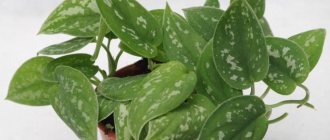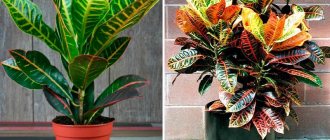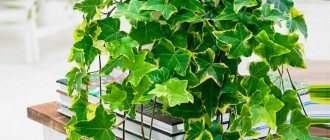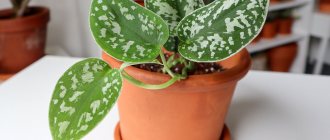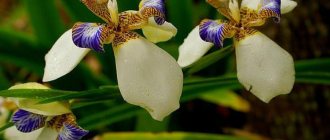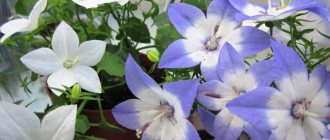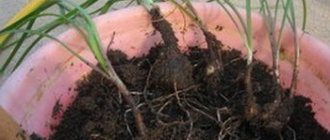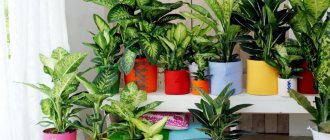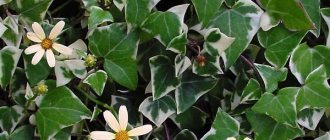Scindapsus is a liana that was domesticated by the peoples of Asia several centuries ago. In Eastern culture, this plant occupies a special place, since legends and beliefs say that homemade scindapsus attracts positive energies into the house, helps get rid of internal anger, promotes the release of creative potential and making rational decisions.
However, among gardeners and lovers of indoor plants, scindapsus is valued for its ease of care and beneficial qualities. Liana belongs to the phytoncides, which means it contains and actively produces substances that prevent the appearance of protozoa, bacteria and fungi. Therefore, it is useful to keep such a plant in a house where there are children and people suffering from allergies.
Description of the plant
Scindapsus is a species of vine from the Araceae family. Literally translated from Latin, "Scindapsus" means "devil's ivy" or "devil's ivy."
The plant grows in southern Asia and has 25 species, of which only three are cultivated. This is an evergreen, perennial vine, which in nature reaches impressive sizes and can fill a large space. Therefore, in Asian countries, wild scindapsus is considered a parasitic plant.
The leaves of the vine, depending on the species, are oval or heart-shaped. The color can be a solid dark green or with mottled patterns in lighter shades.
Scindapsus is related to Monstera. These tropical vines have a similar root system: adventitious roots without a main stem (fibrous) + aerial roots, so that the plant can crawl to any height.
Under natural conditions, scindapsus blooms by throwing out an ear with inconspicuous flowers of two sexes. House plants do not bloom. Domesticated scindapsus is a dwarf, decorative and very low-maintenance vine. It is grown as a hanging plant for decorating window sills, balconies and other vertical gardening objects.
Is it possible to keep scindapsus at home: signs and superstitions
Widow's ivy does a good job of purifying the air in the room where it grows. It removes many harmful substances, such as xylene and formaldehyde.
But flower growers should know that the juice of all representatives of the araceae family is dangerous if it comes into contact with the skin, causing allergic reactions. You cannot chew decorative leaves, because... they cause poisoning. Therefore, decorating an apartment with scindapsus can be done without fear only in places where there are no children or pets.
This plant also has another name - muzhegon . For some reason, it is believed that the flower “drives away” men from the house, breaking up families. It is not recommended to hang it in rooms where there is a girl of marriageable age, predicting that otherwise she will be left without a partner. These superstitions and rumors are based only on the unpaired number of leaves of the plant and the negative effect of its flowers on male power. But, as you know, muzhegon does not bloom at home. And eastern sages consider it a carrier of positive energy.
Types, varieties with photos
Golden scindapsus / Scindapsus aureus
This is the most common cultivated species. However, there is constant debate in the scientific community regarding the classification of this type of vine as a genus. Some botanical dictionaries list the liana in the genus Scindapsus, while others in the genus Epipremnum.
Therefore, the same plant in flower catalogs can be designated under different names - Scindapsus aureus and Epipremnum aureus.
More outdated dictionaries call the vine “ raphidophora ”, as well as “ pothos ”.
Despite such a variety of botanical names, underneath all this confusion lies a plant that is a vine capable of climbing up supports or hanging spectacularly from flowerpots. The maximum length of shoots is two meters. The oval leaves have a bright green color, against which yellow-golden spots are randomly scattered.
Varieties:
- Marble Queen / Marble Queen;
- Tricolor / Scindapsus Tricolor;
- Golden Queen / Golden Queen.
Scindapsus pictus
Characterized by medium-sized foliage (up to 15 cm in length) in the shape of a distorted heart. The color of the leaf blade is dark green. The outer part of the leaves has a silver arched pattern.
The developed variety is Scindapsus pictus Argyraeus.
Scindapsus siamese (Thai)/ Scindapsus siamensis
This home vine is distinguished by large leaf plates in the shape of an elongated heart. White spots are scattered on the green background of foliage.
Differences between scindapsus and epipremnum
Scindapsus and Epipremnum have similar biological characteristics and belong to the same Araceae family. It is very difficult to distinguish plants from each other; they are distinguished by the number of seeds formed. Many species that formerly belonged to the genus Scindapsus are today considered epipremnums.
For example, the golden scindapsus is today called epipremnum aureus, but both names are considered synonyms. The literature often contains conflicting information regarding species, which is explained by the similarity of aroid vines. But plants also differ in small, subtle details.
Epipremnum aureus
Golden epipremnum differs from painted scindapsus in being more resistant to low temperatures. Previously, this variety was considered a greenhouse plant. Epipremnum can easily tolerate a decrease in temperature to 10-12˚С, and painted scindapsus begins to die if the temperature drops below 15˚С.
The main difference between epipremnum and scindapsus is the shape of the leaf blade. If the first ones are characterized by a symmetrical leaf, then the second vine has curved leaves that resemble a comma.
The principles of growing both vines are almost the same, so they need to be bred according to the same algorithm.
Home care
Lighting
Scindapsus grows in artificial and natural light. The only condition is that the light must be diffused. Changes in the length of daylight hours may temporarily deprive the leaves of the vine of its spotted color, but the pattern may soon appear again.
Temperature
Comfortable temperatures for scindapsus are in the range from 16 to 22 degrees.
Watering and humidity
Watering should be rare but plentiful. When temperatures drop, the amount of watering should be reduced to a minimum. It is best to add water when the top layer of soil is completely dry.
Scindapsus loves moist air very much and will delight with bright and lush foliage if it is often sprayed and the leaves are wiped with a damp sponge.
But dry air can lead to wilting of the vine, so the pot of scindapsus should be kept away from radiators and other heating devices.
Priming
The soil should be slightly acidic or neutral acidity. From ready-made mixtures, soil for Monstera is suitable.
You can mix the substrate yourself from turf, leaf soil and peat (1:2:2). You should also add river sand, crushed pine bark and sphagnum moss to this mixture. This mixture should be one proportion of the total portion of the main substrate.
Fertilizers
From early spring to late autumn, the liana is in a state of intensive growth, so it needs minerals. During this period, the plant needs to be fed once every two weeks. Mixtures for vines and Monstera are used as fertilizer in the dose specified by the manufacturer.
In winter, you can fertilize the soil once a month or eliminate fertilizing completely.
Transfer
You should only disturb scindapsus with transplants if the root system has grown too large and there is not enough space for it in the pot. The long shoots of the vine are very fragile, as are the branched roots. Therefore, transplantation is carried out before the start of the growing season by transshipment.
Reproduction of scindapsus
Cuttings
Domestic scindapsus reproduce very well using this method. To maintain its decorative shape, in the spring, before the start of the growing season, the plant must be pruned. Therefore, stems cut from the tops should not be thrown away; they can be used to obtain new scindapsus.
The top cuttings, which have a couple of leaves, are suitable as cuttings. The cuttings are placed in water, to which you can add a little potassium permanganate or crushed coal, as well as liquid to stimulate root growth.
When the cuttings send out their first roots, they can be planted in pots or flowerpots. Within a month, the young vines will take root and will need a more humid environment. To provide the plant with a greenhouse effect, they will need to be kept warm (22 degrees) under film or glass.
By dividing the shoot
This method is also quite effective and gives good results.
A container with standard soil for scindapsus is installed next to the container with the mother vine. On the main vine, a strong stem with several leaves and a layer of aerial root is selected.
The layering is fixed with a pin or paper clip in an empty pot on the surface of the soil.
The soil is watered abundantly, and the place where the layer comes into contact with the ground is covered with a film. When the shoot sends its own roots into the soil (15-20 days), the cuttings can be cut off.
How to propagate and replant a flower at home
Scindapsus can be propagated by layering, dividing the shoot and cuttings. The last method is the most common and simple, so it is recommended for beginners to use. The procedure is carried out step by step:
- On an adult plant, healthy apical cuttings are selected.
- Each cutting is cut under a node, and the sections are treated with a root growth stimulator.
Reproduction and rooting of scindapsus - The cut part should have several leaves.
- A mixture of moss and sand is poured into a small container and moistened.
- The cuttings are planted in the soil, and the container is covered with a bag or glass to create greenhouse conditions.
Planting cuttings in the soil - You can also root planting material in a container with water.
Rooting should occur in good light, and the ambient temperature should not be lower than 22˚C. The formation of roots lasts from 2 to 3 weeks. Rooted cuttings are gradually accustomed to the microclimate of the room, after which they are planted in separate flowerpots.
It is recommended to replant young plants annually, because with such a growth rate the measles system will be cramped in the pot. Adult flowers are replanted every 3-4 years.
The planting container should be wide but shallow. The flower has no special requirements for the composition of the soil; the main thing is that the soil mixture is light and loose. You can purchase a ready-made substrate, or you can mix sand, humus, turf and peat soil in equal proportions yourself. The bottom of the pot must be filled with a high-quality drainage layer.
Diseases, problems and pests
Possible problems in growing scindapsus:
- Black spots on the leaves and sudden leaf drop indicate excess moisture and root rot.
- Dry, brown edges of scindapsus leaves (epipremnuma) – kept in a dry place for too long or constantly dry air in the apartment.
- Loss of leaf variegation may mean the plant needs better lighting.
- Pale leaves, more white spots than green spots in variegated varieties - the plant receives too much sun.
It is extremely rare that scindapsus can be infected with fungal or bacterial infections. In most cases, the reason for this is infected plants located in the immediate vicinity of the vine.
It is impossible to cure scindapsus from these ailments, so you can save the plant only if you cut off healthy shoots from it for cuttings and germinate them again.
Major external problems, such as falling, yellowing, drying of leaves, discoloration or rotting of roots, cause errors in care. Therefore, if you strictly follow the rules of care, the scindapsus will decorate the room for many years.
The main pests of scindapsus are aphids, scale insects and spider mites. Liana tolerates treatment with industrial insecticides well. And since scindapsus loves water treatments, home remedies such as tobacco or garlic tincture and a simple soap solution are suitable for getting rid of pests.
Insect pests can settle on scindapsus: scale insects, spider mites, aphids, etc. You can fight them using Actellik solution (20 drops per 1 liter of water). For significant lesions, treatments are carried out systematically, repeating them up to 4 times with weekly breaks.
